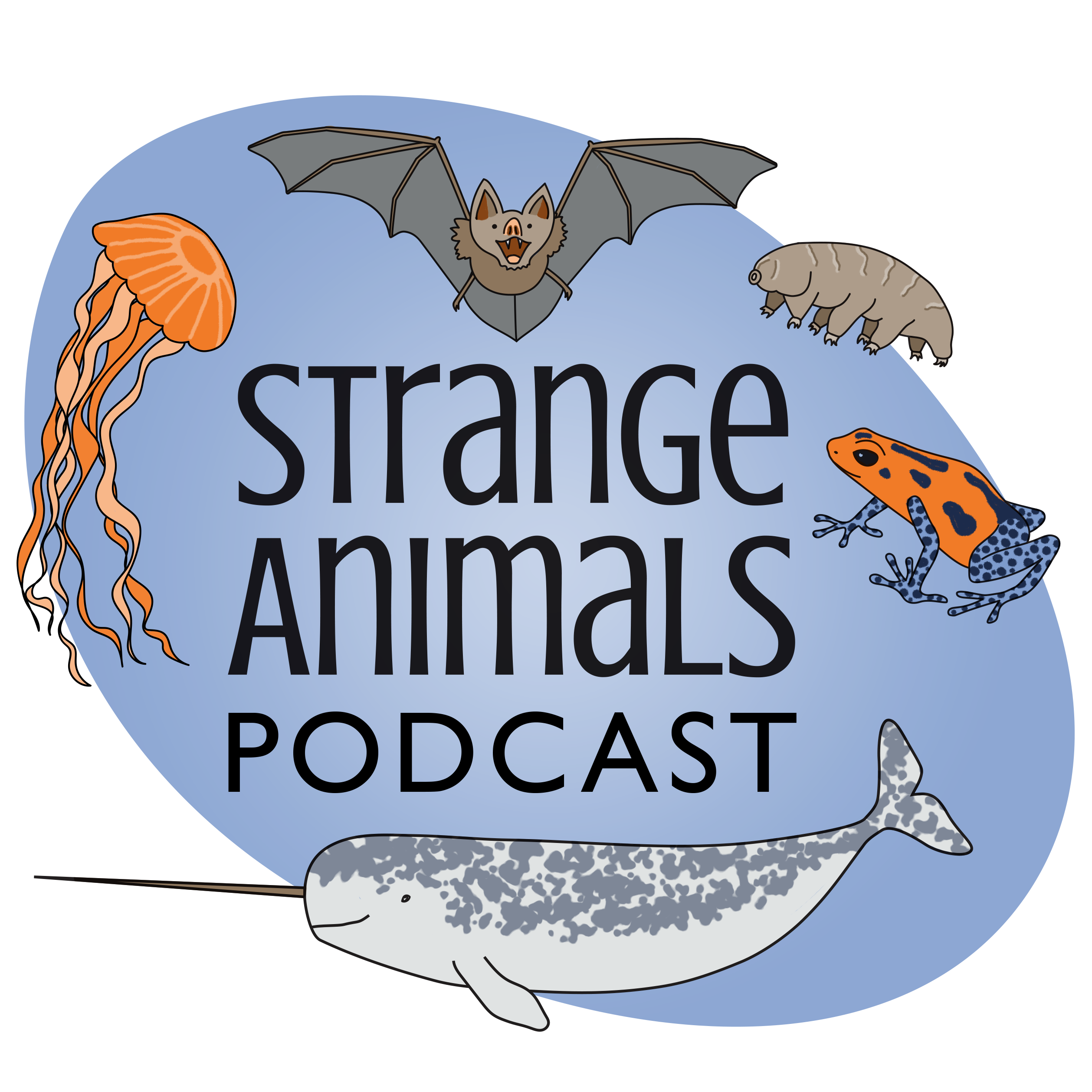Episode 147: Snails and the Gooseneck Barnacle

Thanks to Kim and Richard E. this week for two awesome suggestions! We're going to learn about land snails and about the gooseneck barnacle!\n\nSome baby snails and a mama snail, or at least an adult snail that is probably ignoring all those babies:\n\n\n\nA giant African snail:\n\n\n\nUnlocked Patreon episode about giant African snails (and other stuff)\n\nA rare Polynesian tree snail, white-shelled variety:\n\n\n\nA grove snail:\n\n\n\nGooseneck barnacles:\n\n\n\nA barnacle goose. Not actually related to the gooseneck barnacle:\n\n\n\nShow transcript:\n\nWelcome to Strange Animals Podcast. I\u2019m your host, Kate Shaw.\n\nWe\u2019re getting to some more excellent listener suggestions this week, this time about some interesting invertebrates. Thanks to Kim who suggested snails, and to Richard E for suggesting the gooseneck barnacle.\n\nWe\u2019ve talked about various snails before, in episodes 27, 57, 81, and 136, but let\u2019s dig in and really learn about them.\n\nSnails are in the class gastropoda, which includes slugs, whether terrestrial, freshwater, or saltwater. Gastropods appear in the fossil record way back in the late Cambrian, almost 500 million years ago. Snails and slugs are so common that no matter where you live, you can probably find one within seconds, if you know where to look.\n\nSnails have shells while slugs don\u2019t, but there\u2019s a third type of gastropod called a semi-slug. It has a shell, but one that\u2019s too small for it to live inside. It\u2019s more of a little armor plate than a snail shell. Slugs also have shells, but they\u2019re vestigial and are actually inside the slug so you can\u2019t see them.\n\nScientists have long tried to figure out if mollusks developed shells early or if they started out as a wormlike creature that later evolved a shell. A discovery of a 400 million year old mollusk fossil in Wales shows a wormlike body but also a shell\u2014actually seven plate-like shells\u2014which suggests that the shells developed early and that shell-less mollusks later lost them.\n\nThe snail has a spiraled shell that it can retract its body into, although not all snails can retract all the way into their shells. Snails that live on land are called terrestrial snails, or just land snails, and those are the ones we\u2019ll talk about today. Land snails have lungs, or rather a single lung, although some land snails have gills instead and live in wet areas, although they\u2019re not technically water snails.\n\nMost land snails eat plant material, which they scrape up using a radula. You may remember from other episodes that the radula is a tongue-like structure studded with tiny chitinous teeth, microscopic ones in this case. Snails are sometimes so numerous that they can cause damage to gardens, so often people buy poison to kill the snails in their yard. But a 2014 study shows that killing snails isn\u2019t very effective. The best way to get rid of snails, or at least minimize the damage they do to gardens, is to pick the snails up and transport them at least 30 yards away, or about 20 meters. Snails have a homing instinct, but distances more than about 20 meters are hard for them to navigate. The snails will probably just make a home where they end up. Also, no throwing them into your neighbor\u2019s garden. That\u2019s cheating.\n\nMost land snails are hermaphrodites, which means the snail fertilizes the eggs of other snails and also produces eggs for other snails to fertilize. Some snails bury their eggs in soil while some hide them in damp leaf litter. The eggs hatch into teeny snails with teeny shells, and as the snail grows, its shell grows too by adding layers at the opening.\n\nSnails need moisture to survive, so a snail secretes mucous that helps it retain moisture. The mucus is also thick enough to protect the snail from sharp objects as it travels around on the flat underside of its body, called a foot. Until recently researchers thought that the mucous also helped the snail move, but it turns out that gastropods move entirely due to muscular motions o...